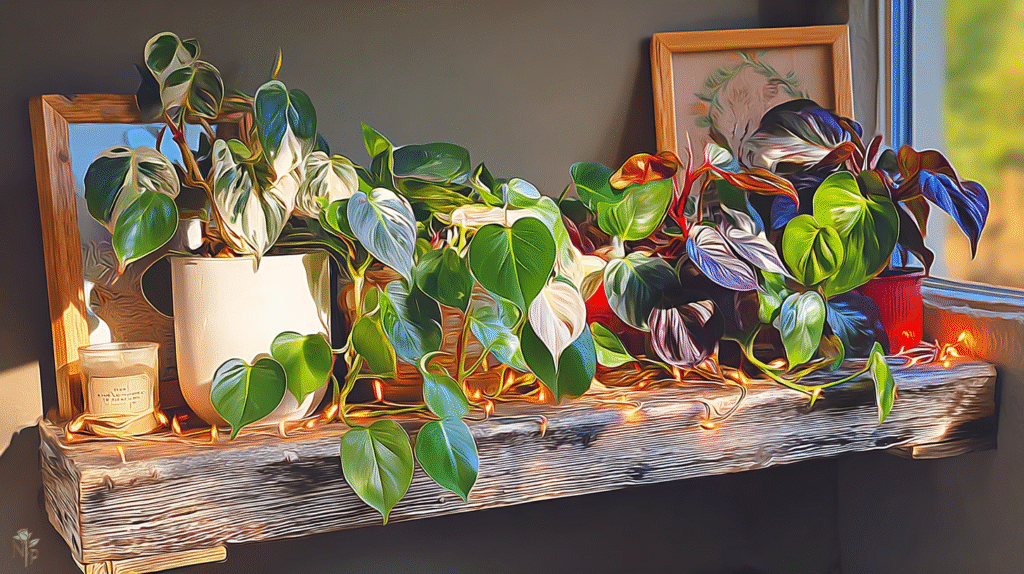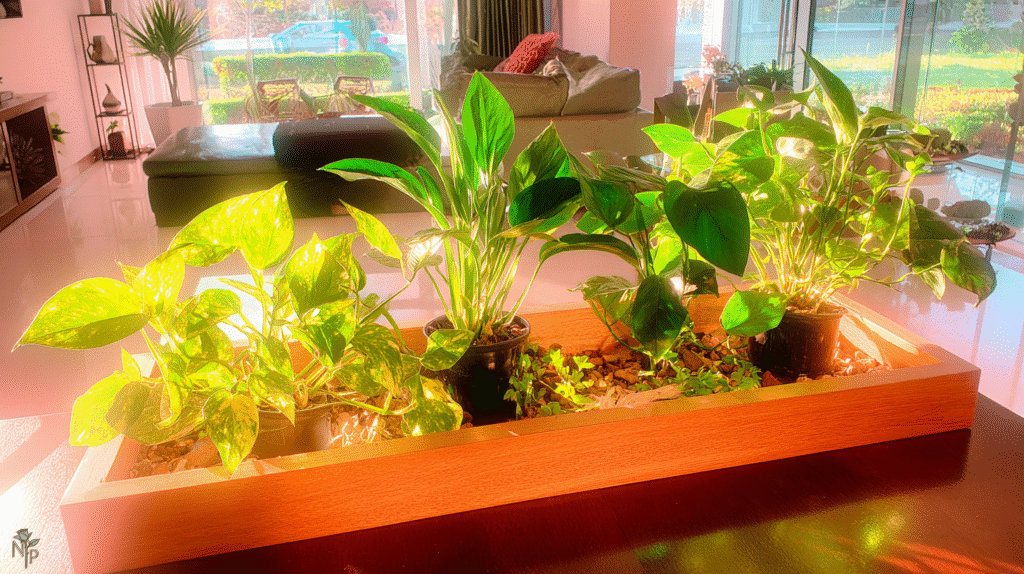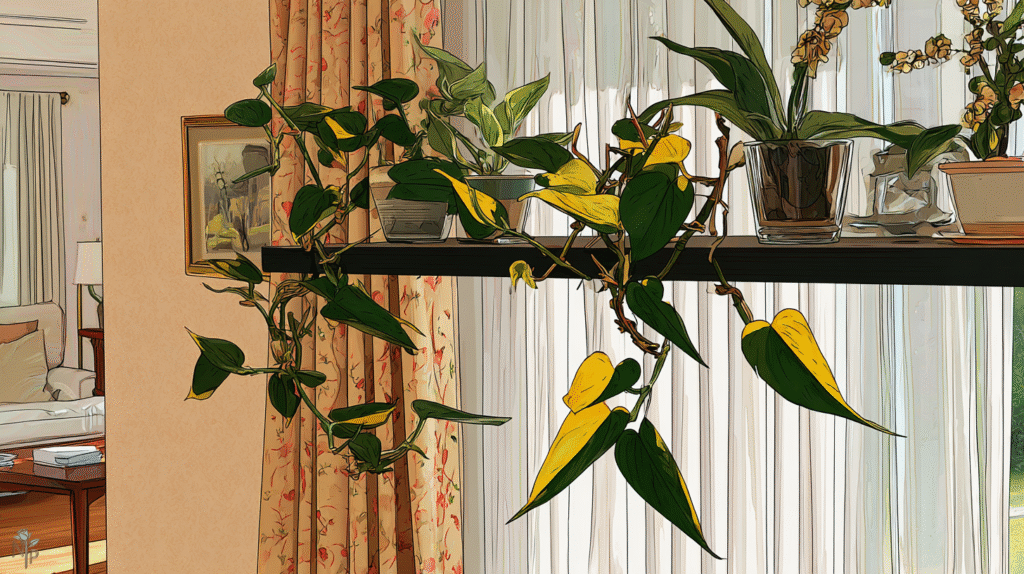My philodendron journey started with a disaster. I bought a Pink Princess at a plant shop because Instagram told me it was “perfect for beginners.” Sixty-five dollars later, I had the most expensive dead plant in my compost bin. Turns out, not all philodendrons are created equal, and Pink Princess is like giving a Ferrari to someone just learning to drive.
Three years and roughly twenty philodendrons later (I may have a problem), I finally understand which varieties actually work for beginners versus which ones just pretend to be easy. The good news? There are philodendrons that genuinely thrive on neglect. The bad news? They’re usually not the fancy ones everyone’s posting about.
Here’s the real guide to choosing your first philodendron — based on actual survival rates, not Instagram likes.
Why Philodendrons Seem Perfect for Beginners (But Aren’t Always)
Philodendrons have this bulletproof reputation. “Impossible to kill!” the care tags promise. And honestly? Some varieties live up to that. Others will die if you breathe on them wrong.
The confusion happens because “philodendron” covers over 450 species with wildly different needs. It’s like saying “all dogs are easy” when you’re comparing a golden retriever to a high-strung chihuahua. Same family, totally different temperament.
My expensive Pink Princess lesson taught me to research specific varieties, not just grab whatever has “philodendron” on the label. Now I match varieties to actual lifestyle and experience, not aesthetic dreams.

The Actual Beginner-Friendly Champions
After killing my share of fancy varieties, here are the ones that survived my learning curve:
Heartleaf Philodendron (Philodendron hederaceum) The golden retriever of philodendrons. I’ve literally forgotten this plant existed for a month and it was fine. Just slightly thirsty.
- Tolerates low light (actually tolerates, not just survives)
- Bounces back from both over and underwatering
- Grows fast enough to be satisfying
- Propagates if you look at it funny
- Costs like $10 at grocery stores
My first heartleaf is now a 10-foot monster that I hack back regularly. It’s survived two moves, multiple repottings, and that time my cat knocked it off a shelf. Indestructible.
Brazil Philodendron (Philodendron hederaceum ‘Brasil’) Heartleaf’s flashier cousin with yellow variegation. Almost as easy but needs slightly more light to keep the yellow. Still very forgiving.
- All the heartleaf benefits
- Pretty variegation without drama
- Maybe needs watering every 10 days instead of 14
- Still cheap and available everywhere
Mine trails from a bookshelf and gets compliments constantly. People think I’m some plant wizard. Nope, just chose the right variety.
Philodendron Green Congo If you want something upright instead of trailing, this is your gateway drug. Thick, glossy leaves, self-heading growth, absolutely bulletproof.
- Doesn’t need support
- Handles neglect like a champ
- Modern looking without being fussy
- Gets impressively large but slowly
I bought mine as a stress test after killing fancier varieties. It’s now my most reliable plant. Waters itself from my forgetfulness, apparently.
The Intermediate Options (After You’ve Proven Yourself)
Once you’ve kept a heartleaf alive for six months, consider these:
Philodendron Micans Velvet leaves that shimmer. Slightly pickier than heartleaf but not dramatically so.
- Needs more humidity than basic varieties
- Shows water needs clearly (leaves curl)
- Stunning in person
- Still reasonably priced
Mine struggled until I moved it to the bathroom. Now it’s thriving on shower humidity. Good stepping stone to fussier varieties.
Philodendron Birkin The one with white pinstripes. Trendy but not impossible.
- Needs bright indirect light to maintain variegation
- Can revert to green if unhappy
- Slower growing than heartleaf types
- Getting cheaper as availability increases
I’ve had one for two years. It occasionally throws a tantrum (random yellow leaf), but generally behaves if you give it decent light.
Philodendron Xanadu Another self-heading type with deeply lobed leaves. Architectural and relatively easy.
- Compact growth habit
- Handles various light conditions
- Drought tolerant once established
- Good for people who want “different” without difficult

The “Wait Until You’re Experienced” Varieties
Learn from my mistakes. These are not beginner plants despite what Instagram suggests:
Pink Princess Philodendron The one that started my education. Gorgeous but demanding.
- Needs perfect light to maintain variegation
- Prone to reverting to green
- Randomly decides to die sometimes
- Expensive to replace when you kill it
My second attempt at Pink Princess is alive but constantly threatening to revert. It’s in the brightest spot in my house and still complains.
Philodendron Gloriosum Those huge velvet leaves with white veins? Stunning. Also humidity queens.
- Crawling growth pattern confuses people
- Needs 60%+ humidity consistently
- Prone to spider mites
- New leaves damage easily
Killed two before accepting I don’t have greenhouse conditions.
Philodendron Verrucosum Fuzzy petioles, velvet leaves, extreme drama.
- Humidity requirements off the charts
- Temperature sensitive
- Expensive and hard to find
- Will die out of spite
Friends don’t let friends start with verrucosum.
How to Actually Choose Your First Philodendron
Assess your reality:
- How often do you actually remember to water plants?
- What’s your real light situation (not wishful thinking)?
- Is your home humidity above or below 50%?
- What’s your plant budget?
Match variety to lifestyle:
- Forgetful waterer? Heartleaf or Congo
- Lower light? Heartleaf wins
- Decent humidity? Try micans
- Want immediate impact? Large heartleaf over baby Pink Princess
Start at boring stores: Home Depot heartleaf > boutique plant shop rarities for beginners. I know it’s not sexy, but living plants beat beautiful corpses.
Reading the Signs of a Good Starter Philodendron
When shopping, look for:
- Glossy, firm leaves (not yellowing or brown edges)
- Multiple stems/growth points
- No signs of pests (check where leaves meet stems)
- Reasonable price (under $25 for first plant)
- Care tag that doesn’t say “high humidity required”
Skip if:
- It’s in a sealed container (death cubes)
- Variegation is already fading
- Price makes you nervous
- Care requirements include “mist daily”

Common Beginner Mistakes I Made
Assuming all philodendrons are the same: Nearly killed a gloriosum treating it like a heartleaf.
Starting with variegated varieties: Variegation often means pickier plants. My Brasil was the exception, not the rule.
Overwatering because “tropical:” They’re not swamp plants. Let them dry out a bit between waterings.
Not enough light: “Low light tolerant” doesn’t mean “thrives in darkness.” Even heartleaf wants some brightness.
Buying for looks not lifestyle: That Pink Princess won’t stay pink in your north-facing apartment. Trust me.
Your Philodendron Success Path
- Start with heartleaf philodendron (seriously)
- Keep it alive for 3-6 months
- Try Brasil or Congo if first one thrives
- Graduate to micans or Birkin
- Now consider the Instagram-famous varieties
This path seems slow but it’s faster than killing expensive plants repeatedly. My plant confidence grew with each heartleaf success. Now I can keep fussier varieties alive because I understand basic philodendron behavior.
The Bottom Line
That dead Pink Princess taught me an expensive lesson: start with varieties that match your experience, not your Instagram goals. There’s no shame in a grocery store heartleaf. Mine is now the backdrop for all my fancy plant photos — nobody needs to know it cost less than lunch.
Philodendrons can absolutely be perfect beginner plants — if you choose the right varieties. Start with the friendly, forgiving ones. Build your confidence. Then chase those rare beauties. Your wallet and your plant self-esteem will thank you.
My collection now includes some genuinely rare philodendrons, but the heartleaf remains my favorite. It’s the plant that taught me I could actually keep things alive. Sometimes the best beginning isn’t the fanciest — it’s the one that survives. 🌱






